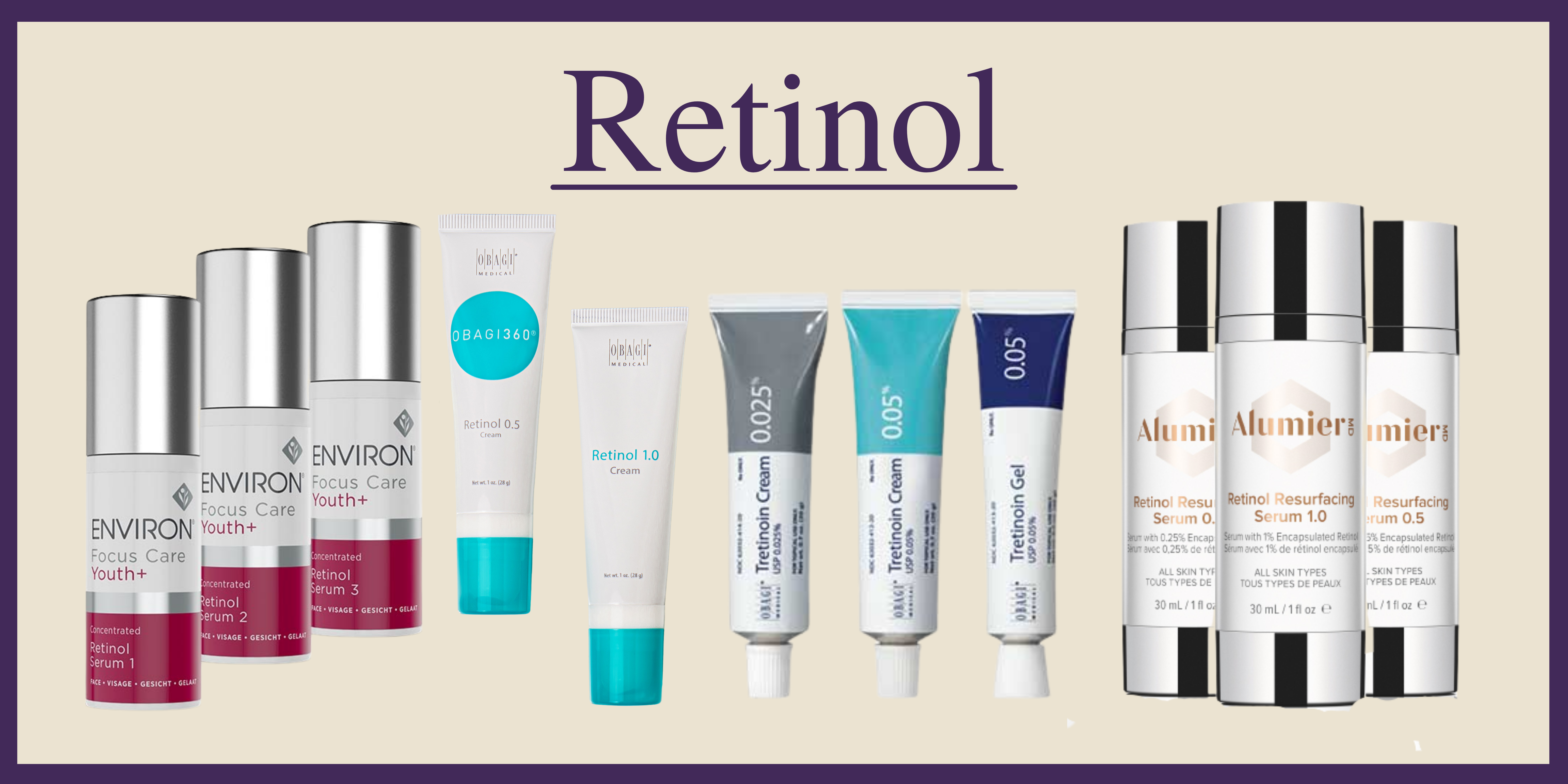Retinol
Retinol is like the holy grail of skincare, but is it right for everyone? Should we all be trying to use it?
Retinol is from the vitamin A family and it can be found in many different strengths and types. The main reason there is a lot of excitement about Retinol or tretinoin is because it is one of the very first ingredients in skincare that has white paper medical based research behind it to say: with continual use you can reverse a fine line. It also has many other amazing benefits, like slowing down oil flow, firming the skin, speeding up cellular turnover, helping with sun damage, pigmentation and open pores, thickening the skin and creating an overall healthy skin environment.
So, if retinol does all of that, why aren’t we all using it?
As a skin care professional, when our salon recommends a medical grade Retinol / tretinoin, we first assess the skin to see if it can tolerate potential side effects.
Retinol works by making its way into the epidermis and speeding up the cellular renewal process of the skin. Your skin cells normally turn over once every 20-30 days depending on age and lifestyle. When you apply Retinol to the skin, it speeds that process up. By speeding this process up, you are encouraging the skin to bring up new and healthy newly born cells, in turn encouraging the older skin cells that are sitting on the surface to slough away.
These new cells are fuller (not flat) and have better cell-to-cell communication. As they are so young, they make your skin look dewy, bouncy and less pigmentated.
Some skins that are already compromised with Rosacea, Acne, poor skin health or broken-down skin barriers may not be ready to tolerate this journey with active Retinol. These skin types may need a low drip-fed form of vitamin A like retinal palmitate / accetate. Alternatively, we may need to improve the health of the epidermis first and then slowly drip feed Retinol into your skincare program at a later date.
Retinol reactions can include dryness, peeling, redness and irritation. Sometimes these can occur while you have been using Retinol for a while, as a change in your lifestyle and weather may contribute. This means you need to change your Retinol frequency of application, which your skincare professional can guide you on.
When using retinol for the first time, go slow – it’s not a race. Think more marathons rather than a sprint. Apply it once a week to start and avoid the neck, eyes and mouth. Things that help with application are gently patting Retinol in and buffering it with a serum or moisturiser on top.
The main thing to take away is Retinol is not for everyone and your skincare professional advise whether or not you are a suitable candidate for it.
At Tessa Stevens we use:
Obagi Retinol and Prescription tretinoin
Environ Retinal Accetate and retinol palmate
AlumierMD Retinol





